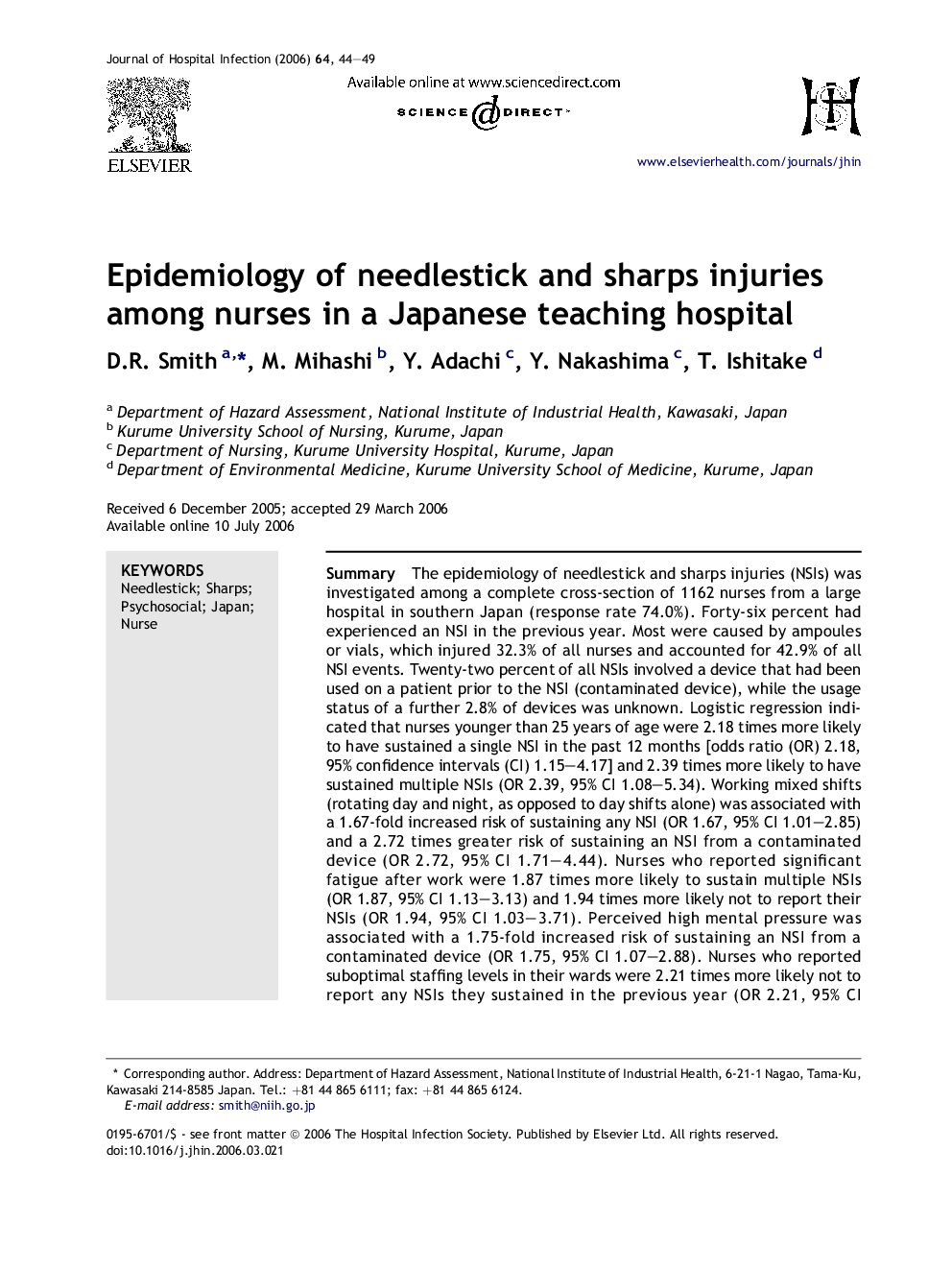| کد مقاله | کد نشریه | سال انتشار | مقاله انگلیسی | نسخه تمام متن |
|---|---|---|---|---|
| 3374082 | 1219318 | 2006 | 6 صفحه PDF | دانلود رایگان |

SummaryThe epidemiology of needlestick and sharps injuries (NSIs) was investigated among a complete cross-section of 1162 nurses from a large hospital in southern Japan (response rate 74.0%). Forty-six percent had experienced an NSI in the previous year. Most were caused by ampoules or vials, which injured 32.3% of all nurses and accounted for 42.9% of all NSI events. Twenty-two percent of all NSIs involved a device that had been used on a patient prior to the NSI (contaminated device), while the usage status of a further 2.8% of devices was unknown. Logistic regression indicated that nurses younger than 25 years of age were 2.18 times more likely to have sustained a single NSI in the past 12 months [odds ratio (OR) 2.18, 95% confidence intervals (CI) 1.15–4.17] and 2.39 times more likely to have sustained multiple NSIs (OR 2.39, 95% CI 1.08–5.34). Working mixed shifts (rotating day and night, as opposed to day shifts alone) was associated with a 1.67-fold increased risk of sustaining any NSI (OR 1.67, 95% CI 1.01–2.85) and a 2.72 times greater risk of sustaining an NSI from a contaminated device (OR 2.72, 95% CI 1.71–4.44). Nurses who reported significant fatigue after work were 1.87 times more likely to sustain multiple NSIs (OR 1.87, 95% CI 1.13–3.13) and 1.94 times more likely not to report their NSIs (OR 1.94, 95% CI 1.03–3.71). Perceived high mental pressure was associated with a 1.75-fold increased risk of sustaining an NSI from a contaminated device (OR 1.75, 95% CI 1.07–2.88). Nurses who reported suboptimal staffing levels in their wards were 2.21 times more likely not to report any NSIs they sustained in the previous year (OR 2.21, 95% CI 1.06–4.89). Overall, this study suggests that NSIs represent a complex and multi-faceted problem for Japanese nurses. Intervention strategies should consider the emerging complicity of psychosocial factors on NSI among hospital staff in Japan, as elsewhere.
Journal: Journal of Hospital Infection - Volume 64, Issue 1, September 2006, Pages 44–49